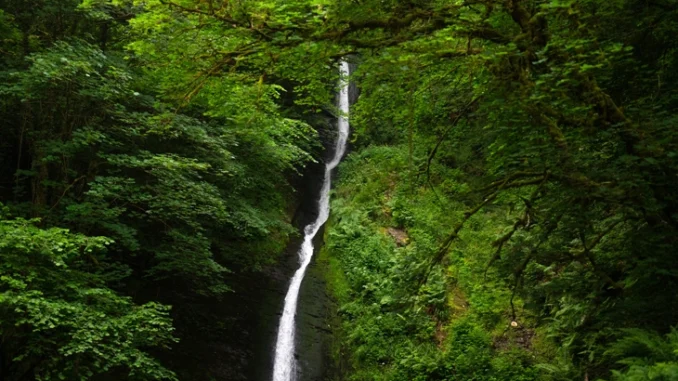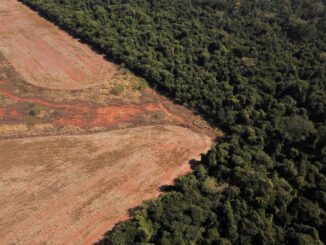
The greenhouse gas in the air that has the greatest effect on atmospheric temperature is water vapour. Why have governments tried to ban carbon dioxide, methane and nitrous oxide emissions and not water vapour?
Carbon dioxide is plant food. This is the first science that children should learn at school. Plants use carbon dioxide from the atmosphere with water and nutrients from the soil to grow plant tissue.
The Earth’s first atmosphere contained hydrogen, helium, ammonia, carbon monoxide, rotten egg gas and methane. It derived from planetary degassing and didn’t last long.
The second atmosphere lasted for billions of years and contained up to 20 per cent carbon dioxide, again from planetary degassing. Much of the carbon dioxide from the second atmosphere dissolved in ocean water, was precipitated as the rock dolomite in warm shallow marine conditions and there it remains naturally sequestered.
During the times of very high carbon dioxide in the atmosphere, the planet enjoyed a number very intense ice ages when kilometres of ice formed at sea level at the equator. We are told by climate activists that a few parts per million increase in atmospheric carbon dioxide resulting from human activities will lead to unstoppable global warming and a climate crisis. The past shows this is false.
The current oxygen-rich atmosphere formed some 550 million years ago. The oxygen came from life which is why there is a search for oxygen and ozone on exoplanets to determine if there is life somewhere out there. The planet does not degas oxygen gas. All oxygen in the atmosphere derives from photosynthesis. At times, the atmospheric oxygen content rose to 35 per cent and there were massive global forest fires. At other times during mass extinction events, the oxygen content fell to less than 5 per cent.
We hear that the Amazonian rainforests are the lungs of the Earth. This tree-hugging ideology is wrong. The lungs of the Earth are the floating phytoplankton in the oceans that have been around for billions of years and use carbon dioxide as plant food and excrete oxygen as a waste product. It’s very hard to get emotional about green slime being the lungs of the Earth.
For the last 550 million years there has been a decrease in atmospheric carbon dioxide from 0.8 per cent to 0.04 per cent. Because of an explosion of animal predation, carbon dioxide was used to make protective shells, most of which are locked away as fossils in ancient rocks. If oceans were acid during past times of high atmospheric carbon dioxide shells would have dissolved and would not be preserved as fossils. Shells removed dissolved carbon dioxide from seawater. Limestone reefs, limey muds and black carbon-rich muds removed even more carbon dioxide from seawater. Ancient carbon dioxide is now locked up in rocks.
Land plants appeared 470 million years ago and removed massive amounts of carbon dioxide from the atmosphere. They still do. Massive accumulations of plants in cool climate wetlands led to huge volumes of plant material that were later compressed to thick coal seams. There were no plant-decomposing bacteria then and plant material accumulated into very thick piles. The carbon in coal came from the atmosphere. By burning coal, this carbon as carbon dioxide is put back into the atmosphere where it originally came from.
In a forest-rich large underpopulated country like Canada, there are 318 billion trees that use 7.6 billion tons of carbon dioxide as food each year. Canadians release 545 million tons of carbon dioxide each year from fossil-fuel burning, smelting and cement manufacture. Canada is already at net zero. Canadians pay tax for the carbon dioxide they release.
In the USA, there are 228 billion trees that each year photosynthesise 5.47 billion tons of carbon dioxide as plant food. Americans release 5 billion tons of carbon dioxide from fossil-fuel burning, smelting and cement manufacture each year. This is 14 per cent of global emissions. The US is already at net zero.
In Australia, the grasslands, rangelands, forests, crop lands and continental shelf waters each year photosynthesise ten times the amount of carbon dioxide that is released by Australian industry and individuals. Australia is already at net zero and releases only 1.2 per cent of global emissions. Australians pay tax for the carbon dioxide they emit for plants to use as food.
On planet Earth, there are 3 trillion trees that suck up 72 billion tons of carbon dioxide as plant food each year. Humans emit 37 billion tons of carbon dioxide each year. The planet is already at net zero, despite China’s massive emissions. Why even bother about net zero? Unless, of course, there is a quid to be made with energy used as a weapon for unelected elites to take away freedoms and control people.
And here is the problem. If the whole world is at net zero, where does the extra carbon dioxide come from? Obviously, it’s natural and it comes from a slight warming of the oceans. Some 97 per cent of annual emissions are from ocean degassing with minor amounts from volcanoes and animals. Carbon dioxide has an inverse solubility in water, as all beer and champagne drinkers know. The lower the temperature of water, the more carbon dioxide can dissolve in water.
Analysis of the chemical fingerprints in ice cores drilled in Greenland and Antarctica show that whenever there has been a natural warming event, the atmospheric carbon dioxide content rises hundreds to thousands of years later. If the oceans warm, they release carbon dioxide. Maybe the rise in atmospheric carbon dioxide is due to solar-driven warming of oceans after the 1300 to 1850 AD Little Ice Age?
The conventional view is that the oceans warm up by increased solar radiation because Earth is closer to the Sun or because the Sun releases more energy. What has never been considered is that the planet has been releasing heat for 4,567 million years and still is. At present, 70 per cent of the heat released by the planet ends up in the oceans. There are thousands of submarine eruptions each year with basalt melts at 1100°C solidifying by transferring heat to 2°C ocean bottom waters. Submarine basalt melts contain up to 13.5% by weight of dissolved carbon dioxide, most of which is released into the oceans as the melt rises towards the ocean floor.
Although there is a paucity of data, there are hints that the El Niño-La Niña cycle may be related to submarine volcanic activity. There is stronger evidence that plate tectonics is a fundamental driver of climate change. This has never been considered in climate models.
Maybe the rise in oceanic temperature resulting in the increased emissions of carbon dioxide from the oceans is due to planetary cooling expressed as increased submarine volcanicity? These are fundamental scientific questions but, because they do not fit the government ideology, such research will never be funded because 97% of scientists funded by the government agree with those who fund them.
The natural world is far more exciting than a woke world that frightens folk with a dogma claiming that small amounts of a trace gas drive a major planetary process.We’ve been fed a pup. It will cost us dearly. `


